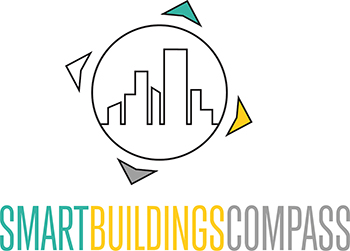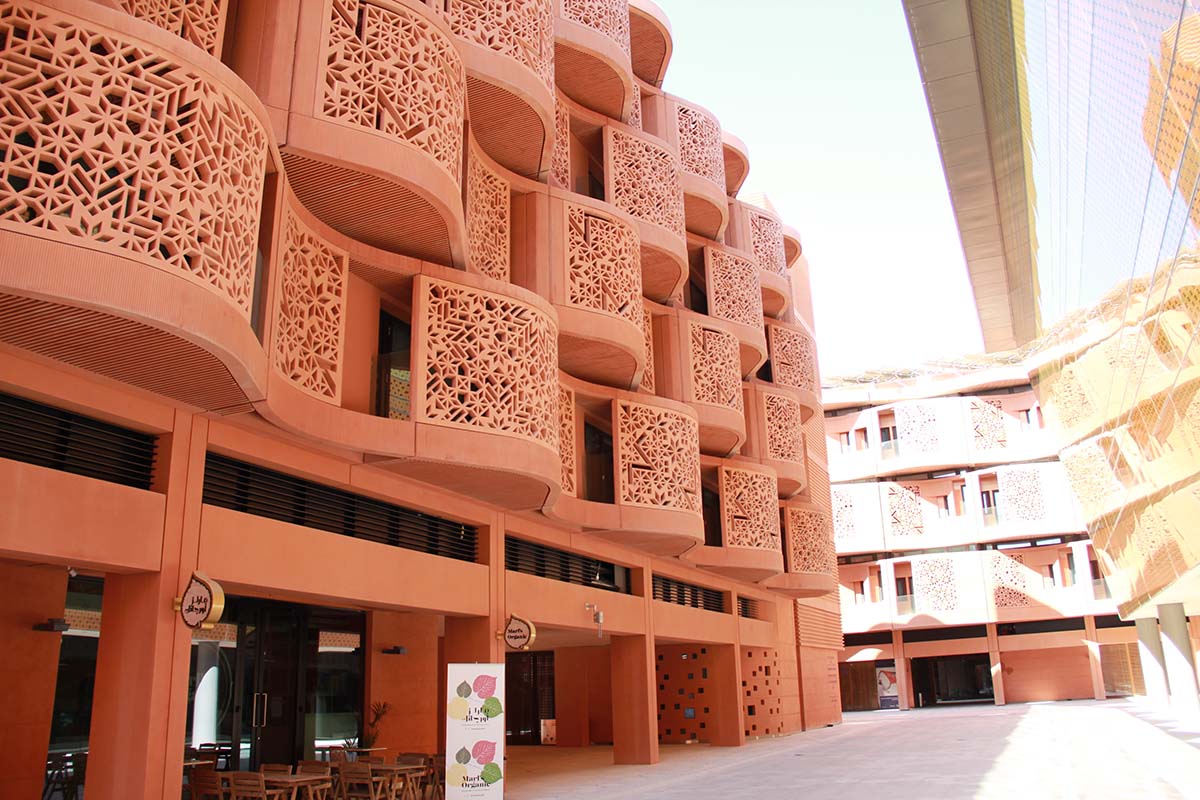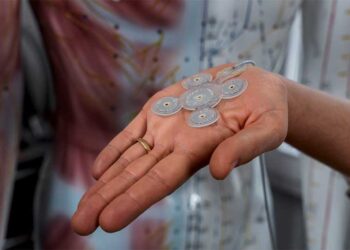The vision sounded promising: Masdar City was to become the Emirates’ ecological showcase project. The eco-city of the future, in which energy is produced exclusively from the sun and wind. In which there are no emissions and virtually no waste, in which innovative mobility concepts make the private car obsolete.
The energy consumption per citizen should be only a quarter of today’s consumption. Launched in 2008, the project was originally supposed to be completed in 2016 – now completion has been postponed until 2030. The first match reality vs. vision went 1:0 for reality.
What we can still look at in the concept: Which structural measures were used for heat protection and for the economical use of resources. This is because the architects have made use of old, traditional concepts from the region. After all, heat regions have long known how to protect themselves from high temperatures.
Nothing left of the spirit of optimism
On site, the silence is especially deafening. Only a fraction of the plan for the entire city has been implemented, and nothing remains of the initial spirit of optimism. The small settlement, once planned by the British star architect Sir Norman Foster, looks like a ghost town, lonely and deserted. We meet only a few people on our tour.
The International Renewal Energy Agency has moved in, for example, and – only slightly surprisingly – the state nuclear company ENEC has also set up its headquarters in Masdar. Nuclear energy was recently recognized by the EU as a bridging technology to enable the transition to sustainable energy sources.
The buildings are small and compact. Air cushions insulate and prevent heat in the buildings.
There is no direct sunlight, the windows are set back. Additional light refraction is provided, for example, by plants and decorative elements.
Welcome to the ghost town: The eco-city is not scheduled to get started until 2030.
Decorative elements prevents of heat in the buildings.
Instead of glass fronts, decorative elements prevent the buildings from heating up.
At first glance, the urban concept in Masdar seems coherent, combining old tradition with new technology: In Arabia, houses have always been built close together. This means that they provide each other with shade and cannot heat up too much. The buildings in Masdar are small, compact and only a few floors high. The planners designed the small town like a “nozzle” so that a pleasant wind blows through the streets. The wind is actively directed through the city, despite the hot desert temperatures, it has pleasantly cool temperatures in the streets of Masdar.
While we are used to large windows in Europe, there is no direct sunlight in this concept to prevent heat from building up in the first place. The windows are recessed, light wells and window slits provide brightness, and air pockets insulate and keep out hot temperatures. Additional light refraction is provided by plants and dark-colored fiberglass concrete panels. A wind tower catches cool winds and ventilates the streets. Sun shades protect from direct sunlight, and water flows over stone fountains to provide natural cooling through evaporation.
Not a single conventional car can be seen in the alleyways – the plan was different: The most important spots should be quickly accessible by foot. Those who still needed a ride would be able to use self-driving cars and buses. However, the system turned out to be too expensive, as it required cables to be laid in the ground. Guests can nevertheless try out this concept on small test tracks.
Self-driving bus system in Masdar City
Small self driving runabout
Wind tower from the inside
Wind Tower
Wood – a building material that withstands an aggressive climate?
Wood is hardly ever used as a building material in the Emirates: The climate is too aggressive – at least when it comes to direct sunlight, and the sandstorms do the rest. If you leave a wooden deck chair in the garden, it won’t last very long.
One of Sir Norman Foster’s buildings is nevertheless a wooden structure. As long as wood is not exposed to direct sunlight, this building proves that it is possible to build in desert regions without concrete. Globally, more than 4.6 billion tons of cement are used every year, and the production process generates around 2.8 billion tons of CO2. That’s almost eight percent of global emissions, more than the combined emissions of air traffic and data centers. In view of the increased demand in emerging countries, this figure could rise even further in the coming years.
According to an architect in the Emirates, an initiative is currently being formed to focus on wood as a building material. This process will not be easy: wooden houses have a hard time getting approved at all in the Emirates.
The British star architect Sir Norman Foster proved that wood can also be used to build in the desert.
Wooden construction by Sir Norman Foster
No wood is used on the outer shell: The hot and sandy climate is too aggressive.
Why Masdar City is still not working today
The concept seems well designed, and is an exciting counterpoint to the massive buildings in the Emirates. Thus, I think that here was given up far too early: With climate changes, we will have to think about how we keep our homes cool – not just how we heat them – in many regions of the world. This will completely change the way we build and renovate – in the long run.
Official statements cite the global economic crisis as the main reason for the delay. The project started in the spring of 2008, of all years, the year Lehman Brothers collapsed. This explanation is understandable for the first few years, but does not explain the postponement of finalization to 2030.
It is evident that the business model was expected to be successful much more quickly. The main problem is therefore much more the fact that sustainable building and renovation is only slowly reaching the mainstream of society. The climate is also changing, it is getting warmer. This will also change the way we build and renovate. But more slowly than expected: Masdar was simply on the market far too early and ahead of its time.
Official homepage: www.masdarcity.ae/
Author: Anja Herberth
Chefredakteurin
















